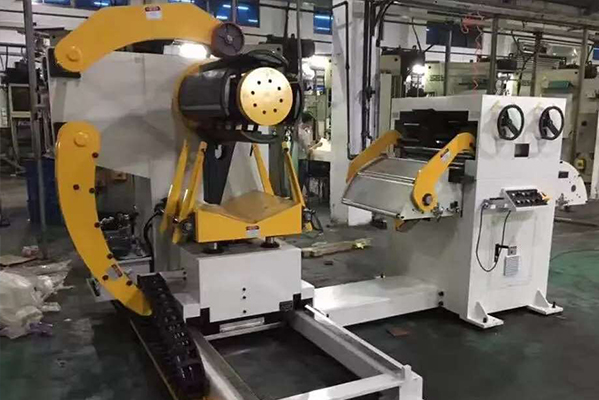Navigation Menu
Contact Us
- Email:
- info@wxavatar.com
- Address:
- Yurong Village, Yuqi Street, Huishan District, Wuxi, China.
Release Date:Mar 21, 2025 Visit:53 Source:Roll Forming Machine Factory
A 10-ton hydraulic uncoiler offers significant advantages for heavy-duty metal processing, but it also has limitations and drawbacks that users should consider before investing. Here are the key disadvantages:
1. High Initial Cost
Expensive Equipment: Hydraulic systems, automation features (e.g., PLCs), and reinforced structures drive up the price. For example, a 5-ton model costs
4,500–4,500–5,500 (as noted in prior search results), so a 10-ton variant would be substantially more expensive.
Installation Expenses: May require reinforced flooring, electrical upgrades, or additional infrastructure to support its weight and power needs.
2. Complex Maintenance
Hydraulic System Vulnerabilities: Leaks in hydraulic pumps, seals, or cylinders can disrupt operations. Repairing hydraulic components often demands specialized technicians.
Fluid Management: Regular replacement of hydraulic oil and filters adds ongoing costs. Contamination or fluid degradation can reduce efficiency.
3. Space and Mobility Constraints
Large Footprint: Heavy-duty models occupy significant floor space, limiting flexibility in smaller facilities.
Immobility: Many units are not easily relocated once installed, complicating layout changes.
4. Energy Consumption
Power-Intensive Operation: Hydraulic pumps and motors (e.g., 3KW–5KW systems) consume substantial electricity, increasing operational costs.
Heat Generation: Hydraulic systems generate heat during prolonged use, requiring cooling mechanisms to prevent overheating.

5. Limited Versatility for Lightweight Coils
Over-Engineering for Small Loads: Designed for 10-ton coils, the machine may operate inefficiently with lighter coils, leading to underutilization.
Adjustment Limitations: While mandrels accommodate varying inner diameters (e.g., 460–520mm), extremely large or small coils may require custom modifications.
6. Noise and Environmental Concerns
Noise Pollution: Hydraulic pumps and motors can produce loud operational noise, requiring soundproofing in some settings.
Fluid Disposal Risks: Improper handling of hydraulic oil poses environmental hazards and regulatory compliance challenges.
7. Skill-Dependent Operation
Training Requirements: Automation features like PLCs and tension controls demand skilled operators. Inexperienced staff may struggle with programming or troubleshooting.
Downtime During Repairs: Complex systems may require extended downtime if specialized parts or technicians are unavailable.
8. Integration Challenges
Compatibility Issues: Retrofitting older production lines to work with the uncoiler might necessitate additional equipment (e.g., conveyors, sensors).
Synchronization Delays: Mismatched speeds between the uncoiler and downstream machinery (e.g., slitters, roll formers) can cause bottlenecks if not properly calibrated.
Mitigation Strategies
Preventive Maintenance: Schedule regular inspections of hydraulic components to avoid leaks and failures.
Operator Training: Invest in PLC and hydraulic system training for staff.
Energy-Efficient Models: Opt for newer systems with variable-speed drives to reduce power consumption.
Supplier Support: Partner with manufacturers (e.g., Liming Machinery) offering warranties, spare parts, and technical assistance.
When to Consider Alternatives
Small-Scale Operations: For lighter coils (<5 tons), mechanical or pneumatic uncoilers may be more cost-effective.
Tight Budgets: Semi-automatic or manual decoilers reduce upfront costs but sacrifice speed and precision.
In summary, while a 10-ton hydraulic uncoiler excels in heavy-duty applications, its cost, complexity, and maintenance demands make it less ideal for small facilities or lightweight tasks. Assess your production scale, budget, and technical capacity before choosing this equipment.